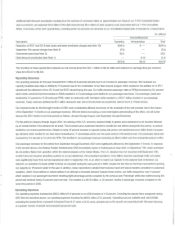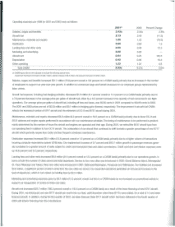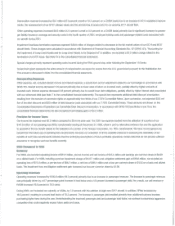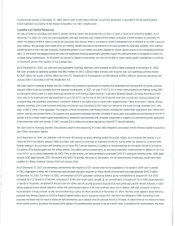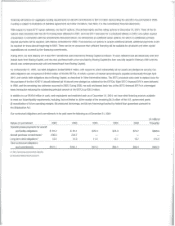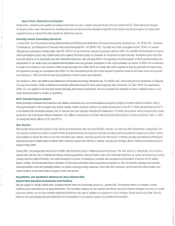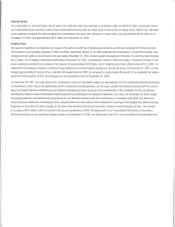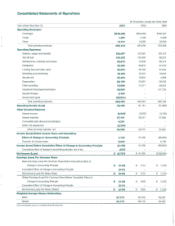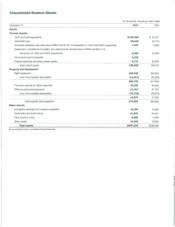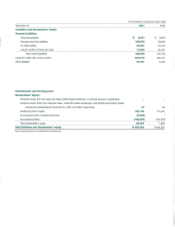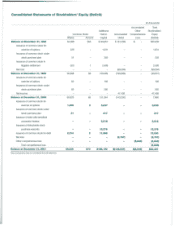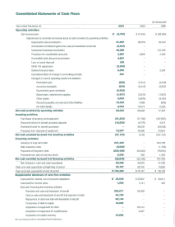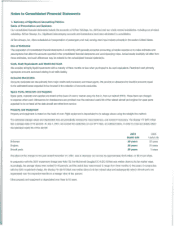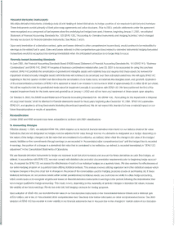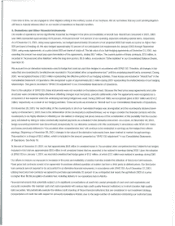Airtran 2001 Annual Report Download - page 20
Download and view the complete annual report
Please find page 20 of the 2001 Airtran annual report below. You can navigate through the pages in the report by either clicking on the pages listed below, or by using the keyword search tool below to find specific information within the annual report.
Interest
Rates
As of December
31,
2001 and 2000, the fair value of our long-term debt was estimated to be $258.5 million and $439.0 million, respectively, based
upon discounted future cash flows using current incremental borrowing rates for similar types
of
instruments or market prices. Market risk, estimated
as the potential increase
in
fair value resulting from ahypothetical 100 basis point decrease
in
interest rates, was approximately $12.6 million as
of
December
31.
2001, and approximately
$11.1
million as
of
December
31,
2000.
Aviation Fuel
Our results
of
operations are impacted by changes
in
the price
of
aircraft fuel. Excluding special items, aircraft fuel accounted for 22.9 percent and
25.9 percent of our operating expenses
in
2001 and 2000, respectively. Based on our 2002 projected fuel consumption, a
10
percent increase
in
the
average price per gallon
of
aircraft fuel for the year ending December
31,
2001, would increase fuel expense for the next
12
months by approximately
$14.4 million, net
of
hedging instruments outstanding at December
31,
2001. Comparatively, based on 2001 fuel usage, a
10
percent increase
in
fuel
prices would tlave resulted
in
an increase
in
fuel
expense
of
approximately $13.9 million, net of tledging instruments utilized during 2001.
In
2001, we
entered into fuel-hedging contracts consisting of swap agreements to protect against increases in aircraft fuel prices. At December
31,
2001,
we
had
hedged approximately
30
percent
of
our projected fuel requirements for 2002, as compared to approximately
50
percent
of
our projected fuel require-
ments for the first quarter
of
2001 and 30 percent for the remainder
of
2001 at December
31,
2000.
On November 28, 2001, the credit rating
of
the counterparty to
all
of
our fuel-related hedges was downgraded, and the counterparty declared bankruptcy
on December
2,
2001. Due to the deterioration of the counterparty's creditworthiness, we no longer consider the financial contracts with the counter-
party to be highly effective
in
offsetting our risk related to changing fuel prices because
of
the consideration of the possibility that the counterparty
will default by failing to make contractually required payments as scheduled
in
the derivative instrument. As aresult, on November 28, 2001, hedge
accounting treatment was discontinued prospectively for our derivative contracts with this counterparty
in
accordance with SFAS 133. Gains and
losses previously deferred
in
"Accumulated other comprehensive loss" will continue to be reclassified to earnings as the hedged item affects earnings.
Beginning on November 28, 2001, changes
in
fair value
of
the derivative instruments have been marked to market through earnings. This resulted
in
acharge
of
$0.2 million, which
is
included
in
the amount presented as "SFAS 133 adjustment"
in
our Consolidated Statements of Operations.
Recent terminations
of
our aircraft fuel hedges
in
place as of December
31,
2001, are discussed
in
Note 16 to our consolidated financial statements.



